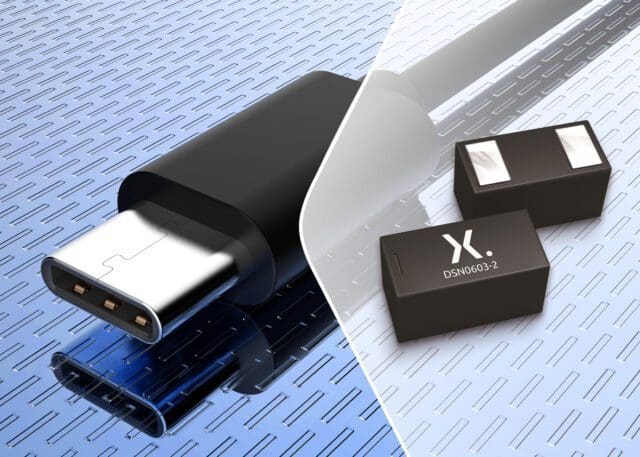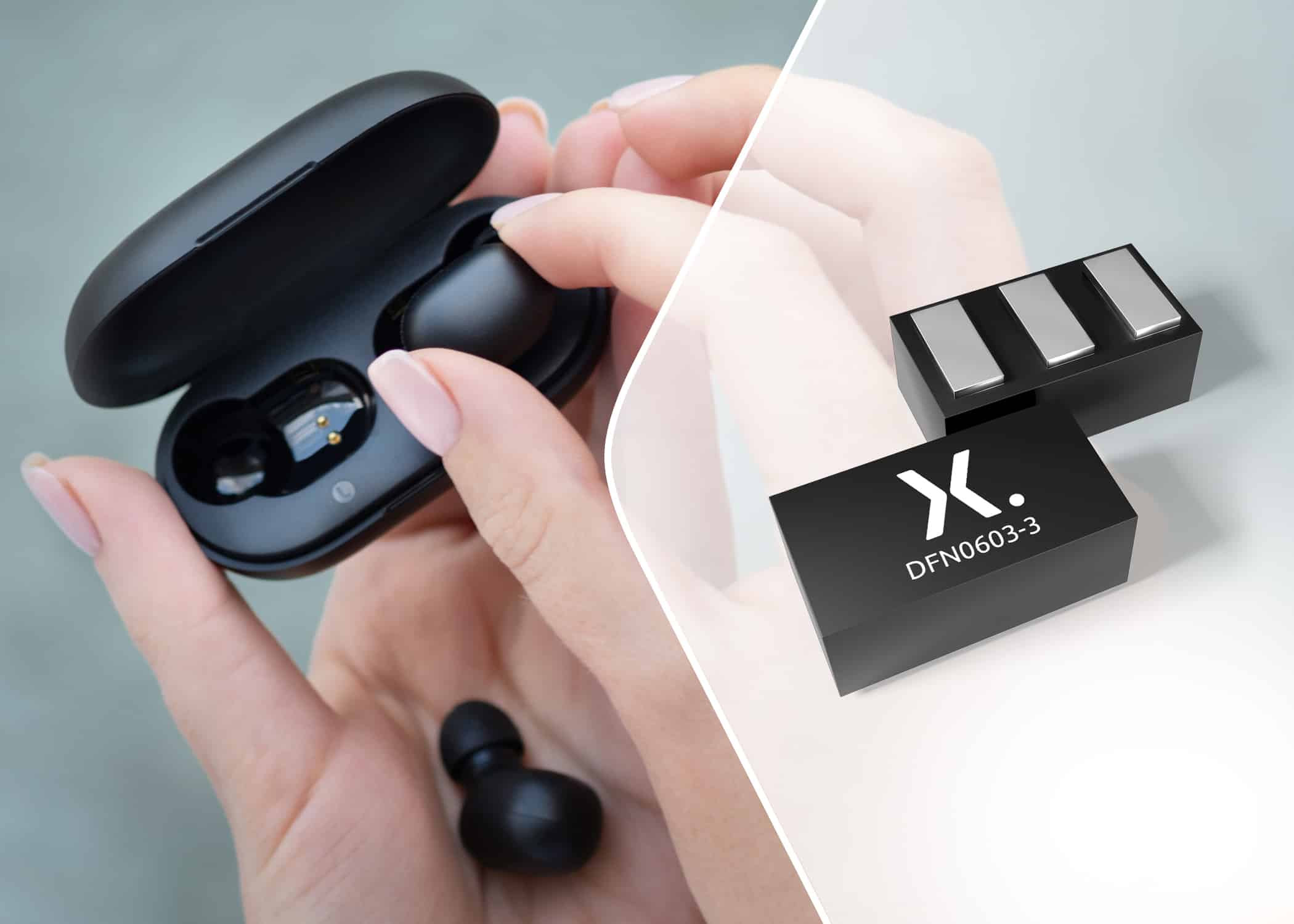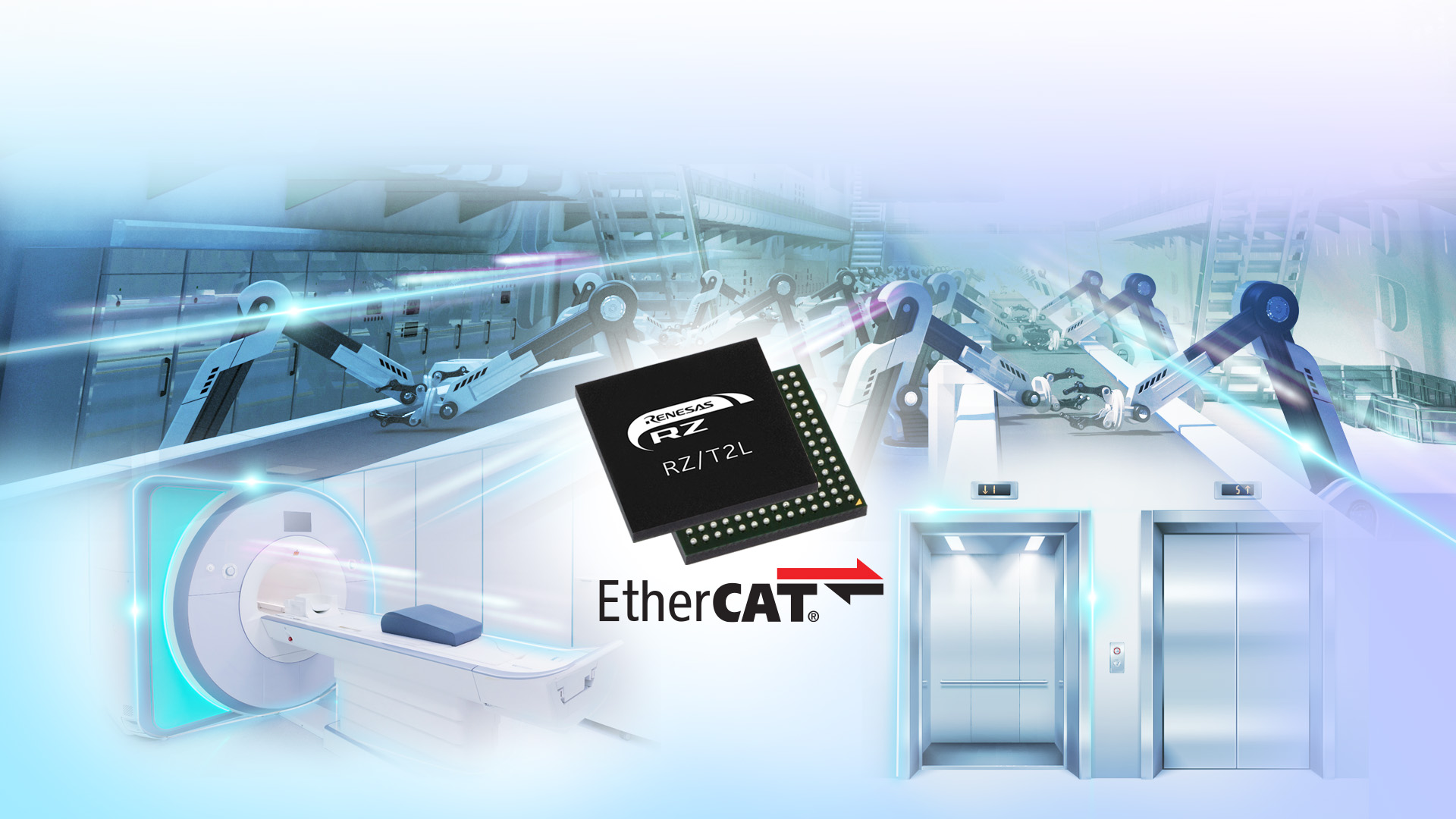TrEOS-based protection offers industry-leading return and insertion loss to help meet tight system requirements
Nexperia today announced two electrostatic discharge (ESD) protective devices optimized for use with retimers and redrivers on high-speed data lines. PESD2V8Y1BSF is designed to protect USB4 (Thunderbolt) interfaces, while PESD4V0Y1BCSF is intended for use with both USB4 and HDMI 2.1. These products use Nexperia's proven TrEOS technology, which combines low clamping with low capacitance and high robustness.
Retimers and redrivers are commonly used in the design of high-speed USB4 interfaces. However, these result in shorter board designs that have lower parasitic inductance, with the unintended consequence of reducing the overall ESD robustness at the system level. The PESD2V8Y1BSF and PESD4V0Y1BCSF provide very fast transmission line peak clamping voltages (vfTLP), which are even lower than USB4 protection solutions with no visible pickup voltage on the standard TLP I(V) curve. This helps to compensate for the reduced inductance between the shield and the retimer, thus increasing the overall robustness of the ESD at the system level. To meet ESD limiting loss recommendations, these devices are designed to have exceptionally low insertion loss (-0,29 dB at 10 GHz) and return loss (-20,6 dB at 10 GHz). Unlike other solutions, capacitance does not increase with operating voltage, offering full RF performance up to reverse standoff voltage.
The PESD2V8Y1BSF and PESD4V0Y1BCSF offer greater design flexibility than other ESD protective devices, since they can be placed immediately next to the connector of the device they protect. This means that the AC coupling capacitance is also protected. Additionally, it places most of the line inductance between the ESD shield and the protected device to optimize the ESD performance of the system. “Nexperia enables design engineers to meet tight requirements for both insertion and return loss for high-speed USB4 data lines, providing devices that minimize the impact of ESD protection on the overall system budget,” says Stefan Seider, senior product manager at Nexperia. "These devices offer the optimal balance between optimizing system-level ESD robustness and RF performance."
To maintain compatibility with older interface standards such as USB3.2, which can be connected via USB Type-C, the PESD2V8Y1BSF has a reverse disconnect voltage, VRWM = 2,8V, while the PESD4V0Y1BCSF has a VRWM. = 4 V, which makes it also suitable for HDMI 2.1. The RF performance of the TrEOS technology used in both devices does not degrade over the operating voltage range. In addition to USB4 and HDMI 2.1, both components can also be used to protect PCIe or DisplayPort interfaces.
For more information on these new protective devices, including product specifications and data sheet, visit the web page of Nexperi.








